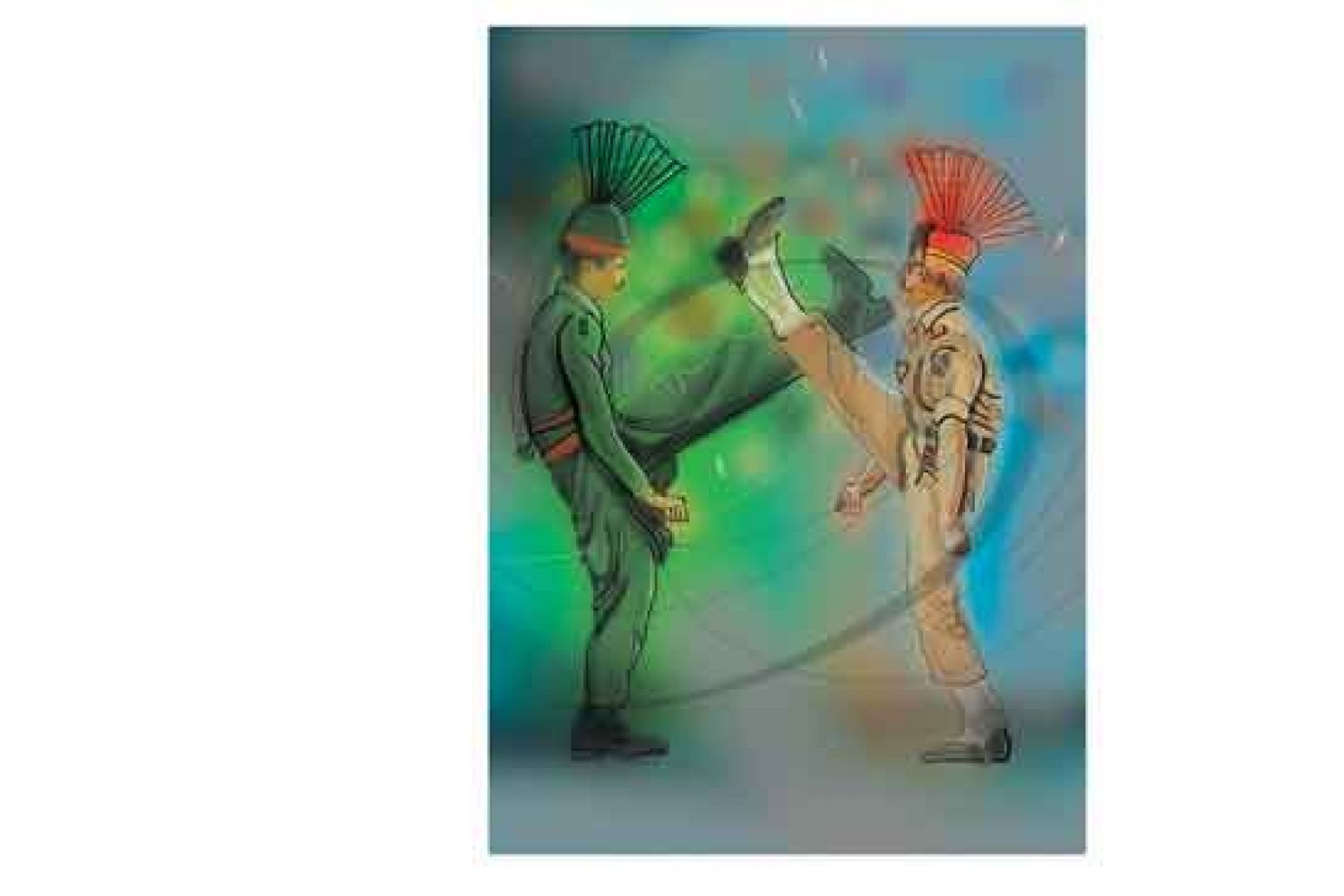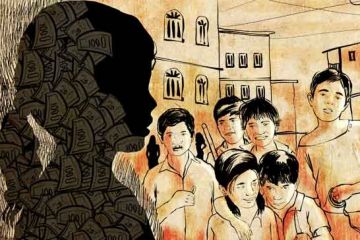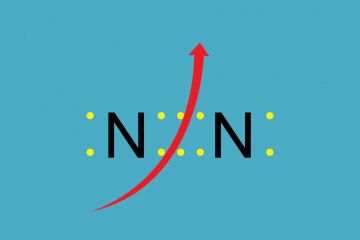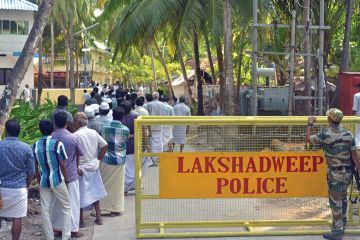
Every day around
sunset, on the outskirts of Lahore, at the Wagah border between India and
Pakistan, the public gathers to see a show of military muscle and colour in a
ceremony that dates back to 1959.
People from all walks
of life become part of the message to the other side. They hold posters
expressing solidarity with Kashmir, as loudspeakers blare patriotic songs.
There’s also a recorded recitation of Quranic verses that focuses on
non-believers.
The road from Pakistan
goes u





